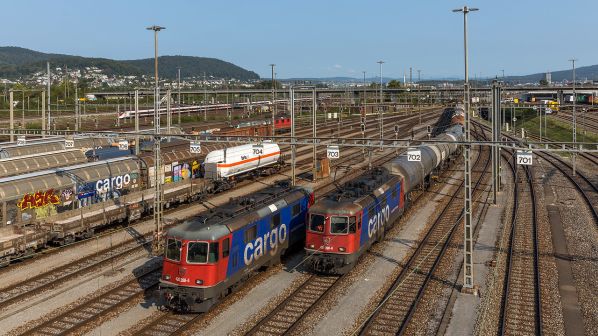AFTER a difficult first quarter due to the pandemic, Swiss Federal Railways (SBB) says that it managed to reduce the overall half-year loss from SFr 389m ($US 395.8m) in the first half of 2021 to SFr 142m in in the first half of 2022.
“The war in Ukraine, the insecure supply chains and the general economic situation mean that SBB's financial situation remains tense even after the coronavirus-related restrictions,” SBB says. “The financial situation will continue to deteriorate due to sharply rising energy costs, inflation and higher interest rates.”
SBB normally operates its trains using 90% hydro-electric power mostly generated from its own power plants. However, SBB is currently producing less energy due to this summer’s drought and low water levels in reservoirs. SBB is currently keeping its reservoirs as full as possible so that it can generate its own electricity even in a shortage and maintain train services as much as possible. To do this, SBB has had to procure replacement energy on the market at sharply rising prices.
This has already had a negative impact on the result of SBB’s Infrastructure Energy division, which made a loss of SFr 24.2m in the first half of 2022 compared with a surplus of SFr 17.5m in the first half of 2021. “The situation worsened in the summer and will weigh heavily on the 2022 annual result,” SBB says.
Passenger recovery
Most passenger demand recovered from mid-March. But since May, passenger traffic has been stagnating at around 10% lower than before the pandemic.
In the first half of 2022, 1.10 million passengers travelled on SBB trains per day which was 43.9% more than in 2021. However, this is still 15.1% fewer passengers than before the pandemic in 2019.
First half freight traffic fell by 2.8% for SBB Cargo and by 4.6% for SBB International and SBB says it still cannot operate wagonload freight economically. SBB Cargo lost SFr 34m and SBB Cargo International SFr 3.8m.
SBB says long-term debt “remains a challenge” at SFr 11.3.bn, which is 30.6% higher than in 2019. The debt coverage ratio was 10.2 at the end of the first half of this year compared with a federal government target of 6.5 by 2030.
After the Swiss parliament passed a motion for additional financial support for Covid losses in the summer session, the federal government is currently working with SBB to revise the joint stabilisation package for sustainable financing, although it is not expected to have an effect until 2023 at the earliest.
In the meantime, SBB is implementing savings measures amounting to around SFr 6bn by 2030 through an efficiency drive and digitalisation.

